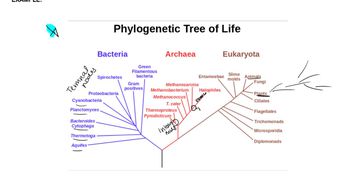Here are the essential concepts you must grasp in order to answer the question correctly.
Horizontal Gene Transfer
Horizontal gene transfer (HGT) is the process by which organisms exchange genetic material outside of traditional reproduction. This can occur through mechanisms such as transformation, transduction, or conjugation. In the context of bacterial genetics, HGT can lead to increased genetic diversity and the spread of traits like antibiotic resistance. Understanding HGT is crucial for interpreting genetic studies, especially in pathogenic bacteria like Bacillus anthracis.
Recommended video:
Point Mutations
Point mutations are changes in a single nucleotide base pair in the DNA sequence. They can be classified as missense mutations, which alter the amino acid sequence of a protein, or synonymous mutations, which do not change the protein's amino acid sequence. The identification of point mutations in the study indicates genetic variation among strains, which can provide insights into evolutionary relationships and the potential for gene transfer among populations.
Recommended video:
Phylogenetic Analysis
Phylogenetic analysis involves studying the evolutionary relationships among various biological species based on genetic information. By comparing genetic sequences, researchers can infer how closely related different strains are and whether they share a common ancestor. In the study, the authors likely used phylogenetic analysis to assess the genetic differences and similarities among B. anthracis strains, leading to their conclusion about the absence of horizontal gene transfer.
Recommended video:






